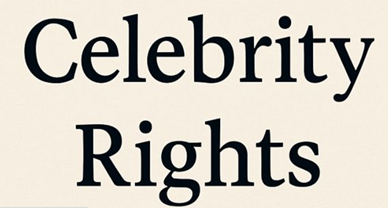Indian Copyright Act and Marrakesh Treaty : Decoding the Lacuna under Copyright Act.
Introduction
The copyright covers a vast domain of subject matters such as literacy, drama, music, artistic, cinematographic, and sound recordings. Each of the subject matter is considered as a work of art and such works when applied for protection under copyright act by the author or creator, and the entitlement over the same is granted, the work is then considered as Copyrighted work, and exclusive rights are granted to authros over his work. This right comprises facets such as production rights, distribution rights, etc. The act lays provision for accessibility of such copyrighted work to people with disability, such as blind, visually impaired, etc but does not lays any such guidance over the procedure.
This article discusses the gist of the issue relating to copyrighted work accessibility to people with disability, and highlights the existing lacuna under the copyright act for the same.
Marrakesh Treaty
Marrakesh Treaty was adopted on June 27, 2013, to facilitate access to published works for people who are Blind Persons, Visually Impaired Persons, or Print Disabled (hereinafter beneficiary) who refrains from indulging in any printed form of copyrighted work. The purpose of the treaty was to create a set of mandatory limitations and exceptions for benefit of Blind persons, VIPs, and PDP.[i] It required the contracting parties to implement limitations and exceptions to their national law of copyright in their country for permitting the production, distribution, and accessibility of published work in such a format that is convenient as well as permission to exchange such copyright works across borders and serve the beneficiaries.[ii] The treaty enumerates the beneficiary people may be affected by a range of disabilities that tend to interfere with the effective reading of printed materials.
[Image Sources : Istock]
The treaty creates an obligation on the contracting states to provide for limitations or exceptions to the national copyright act for the Right of reproduction, right of distribution, and right of making accessible to the beneficiary under the WIPO Copyright Treaty.[iii] This treaty also directs for permission of use, without authorization of the copyright holder over such accessible formats of copyrighted copies, which should be non-commercial lending & may comprise of electronic communication. It also directs to impose such limitations and exceptions over copyrighted work in a particular format which cannot be obtained commercially by any person in the market. It also empowers parties for sharing of such format copies of copyright work created under limitation and exception to be made available in other contracting states, provided that it is done under the pursuant operation of law in both the contracting states.[iv]
One of the perk of this treaty is that the contracting parties are free to adopt such measures necessary to ensure the application of the treaty, including the method for implementing the law in their legal system. This may be judicial, administrative, and regulatory for the benefit of such persons.However, a direction laid out by treaty is to make sure not to contravene the existing treaty under Berne Convention, WIPO Copyright Treaty, or TRIPS.[v] The treaty also provides for contracting states to implement such limitations and exceptions for the benefit of the beneficiary, considering the present scenario of the contracting party’s economic situation, and the social & cultural needs of the country are taken into account while implementing.
Copyright Act, 1957
The Chapter XI of the Copyright Act lays out infringement of copyright, where the section 52 sub-clause (ZB) lays the use of copyrighted work in such accessible formats[vi] by any –by an individual who in pursuit of facilitating any person with such disability to get hold of copyrighted works. Such facilitation may include sharing with the person with a disability solely for private or personal use. Furthermore, it can also be an organization[vii] working in pursuit of betterment for people with disability in case of ordinary measure viz-a-viz such format of copyrighted work in normal format hampers the enjoyment and manipulation of such work by the disabled person. The form of copyrighted work may be made in a format accessible to the person with a disability, and on a non-profit basis as well as only such cost to recover the cost of production. This organization ensures that such work is accessible in a format only used by people with disability and ensure measures that are reasonable to prevent its usage in the commercial channel of business.
Another section laying out for compulsory licensing for facilitating benefit to disabled is section 31B, where such person or individual acting in pursuit of facilitating benefit to people with disability on a profit basis or business can request the court for compulsory license to publish copyrighted works. Upon the grant of compulsory license by the court after its finding of such request is bonafide and credentials of applicant satisfy the application requisites, may direct the Registrar of Copyright to grant applicant compulsory license. Though the compulsory license under this section also needs to mention means, format, period, and no of copies issued including the royalty. Under such circumstances, the court may permit to exceed the limits upon applications and grant reasonable opportunity to the owner of rights to allow for issuing more copies.
The gist of the provision mentioned under the aforementioned act is derived from the Marrakesh treaty therefore we need to understand the treaty to understand the provision so laid down.
Lacuna: Copyright Act.
In Authro Guild v. Hathi Trust[viii] the US Court held that digitalization for full text search and acess for print disable readers is covered under Fair use and laid down the procedure for the accessibility of copyrighted work to people with disability. While in United Kingdom, the Copyright, Design and Patent Act, 1988[ix] comprises of provision over the procedure for accessibility of copyrighted work to people with disability.
Though being a signatory and contracting party to the Marrakesh Treaty India has introduced the provision under the copyright act for accessibility of copyrighted work to people with disability and conformed to the norms laid down in the same. However, a lacuna remains in the copyright act i.e. the limitation or measures to be ensured for preventing any copyrighted work in the ordinary channel of Business. The Section 52 (ZB) proviso highlights the burden on the organization of ensuring that copyrighted work in such an accessible format is communicated only to people with disability and also to take such reasonable steps to prevent its entry into the ordinary channel of business, but doesn’t lay out any concrete regulations or measures ensuring that such copyrighted work is only facilitated to beneficiaries.
Author: Afham Akhtar, in case of any queries please contact/write back to us at support@ipandlegalfilings.com or IP & Legal Filing.
REFERENCES
[i] Summary of the Marrakesh Treaty to Facilitate Access to Published Works for Persons Who Are Blind, Visually Impaired, or Otherwise Print Disabled (MVT) (2013) (wipo.int) https://www.wipo.int/treaties/en/ip/marrakesh/summary_marrakesh.html
[ii] Cross Border Exchange of Accessible Format Copies, Article 5, Marrakesh Treaty.
[iii] National Law Limitation and Exception Regarding Accessible Copies, Article 4, Marrakesh Treaty,
[iv] Id at 4.
[v] General Obligation on Limitation and Exception, Article 11, Marrakesh Treaty.
[vi] Section 52 (zb) (i), Copyright Act 1957, Copyright Act, 1957 (bareactslive.com)
[vii] Section 52 (zb) (ii), Copyright Act, 1957, Copyright Act, 1957 (bareactslive.com)
[viii] 755 F.3d 87 (2d Cir. 2014)
[ix] Section 31A – F, Chapter III, Copyright, Design and Patent Act, 1988, United Kingdom



